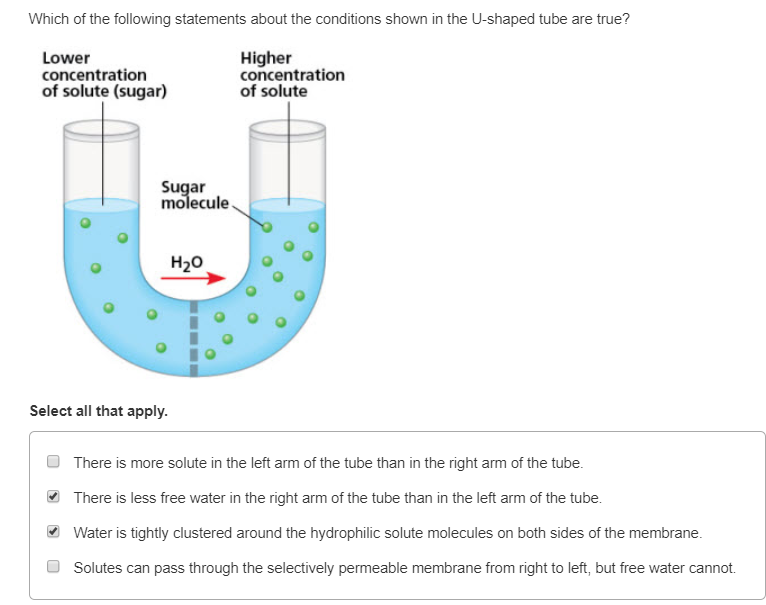Which Of The Following Is True Of Solutions

Imagine a world where every challenge, every obstacle, every seemingly insurmountable problem melts away like snow in the spring sunshine. It’s not a naive dream, but a perspective shift – a recognition that within every difficulty lies the seed of a potential resolution. Like unlocking a complex puzzle, understanding the essence of solutions themselves brings us closer to navigating life's inevitable complexities with grace and effectiveness.
This article will delve into the fundamental nature of solutions, exploring their characteristics, creation, and impact. We will examine the qualities that define a true solution, separating them from mere quick fixes or temporary band-aids. The intention is to empower readers with the knowledge to not only identify effective solutions but also to actively cultivate a solution-oriented mindset in their own lives and communities.
The Essence of Solutions: More Than Just Answers
What exactly constitutes a "solution"? It's more than just an answer; it's a comprehensive approach that addresses the root cause of a problem and leads to a lasting positive outcome. A true solution is characterized by its effectiveness, sustainability, and ethical considerations.
It doesn’t just mask the symptoms; it tackles the underlying issue, preventing recurrence. Think of it like treating a disease rather than just managing the fever.
Defining Characteristics of Effective Solutions
Effective solutions are not one-size-fits-all; they are tailored to the specific context of the problem. This means considering all relevant factors, including the environment, the stakeholders involved, and the potential consequences of the solution.
Adaptability is also key. A rigid solution that cannot be adjusted as circumstances change is unlikely to remain effective in the long run.
Furthermore, effective solutions are often innovative. They may involve rethinking conventional approaches and exploring new possibilities.
Building Blocks of a Solution: Understanding the Process
Creating effective solutions isn't a magical process; it’s a structured approach that involves several key steps. The first, and arguably the most important, is defining the problem accurately.
A poorly defined problem will inevitably lead to a flawed solution. It's crucial to understand the root cause, not just the symptoms.
Once the problem is clearly defined, the next step is to gather information and analyze the situation. This may involve research, data collection, and consultation with experts.
After gathering information, the next phase is brainstorming potential solutions. This requires creativity, open-mindedness, and a willingness to explore unconventional ideas. Don't dismiss any idea too quickly; even seemingly outlandish suggestions can spark valuable insights.
With several potential solutions in hand, it's time to evaluate their feasibility and effectiveness. Consider the potential benefits, risks, and costs of each option.
Choose the solution that offers the best balance of these factors. Implementation is the next critical step.
A well-designed solution can fail if it's not implemented effectively. This requires careful planning, communication, and coordination. Finally, it’s important to monitor the implementation and evaluate its effectiveness. Is the solution achieving its intended goals?
Are there any unintended consequences? This ongoing evaluation allows for adjustments and refinements as needed.
The Importance of Collaboration and Communication
Solutions rarely emerge in isolation. Collaboration and communication are essential ingredients for success. Involving stakeholders in the problem-solving process ensures that diverse perspectives are considered.
It fosters buy-in and increases the likelihood of successful implementation. Open communication is also crucial.
Keeping everyone informed about the problem, the proposed solutions, and the progress of implementation helps to build trust and avoid misunderstandings.
Solutions in Action: Real-World Examples
The principles of effective problem-solving can be applied to a wide range of situations. Consider the challenge of climate change.
There is no single "silver bullet" solution. Instead, a combination of strategies is needed, including reducing greenhouse gas emissions, developing renewable energy sources, and adapting to the impacts of climate change.
The success of these strategies depends on international cooperation, technological innovation, and individual actions.
Another example is in the field of healthcare. The development of vaccines for diseases like polio and measles has been a remarkable success story.
However, ensuring equitable access to these vaccines remains a challenge. Solutions require not only scientific breakthroughs but also effective distribution systems and community outreach programs.
Beyond Problem-Solving: Cultivating a Solution-Oriented Mindset
While effective problem-solving skills are valuable, cultivating a solution-oriented mindset is even more transformative. This involves approaching challenges with optimism, creativity, and a belief in the possibility of finding solutions.
It's about seeing problems as opportunities for growth and innovation. This mindset can be cultivated through practice.
Start by consciously reframing problems as challenges. Instead of dwelling on the negative aspects of a situation, focus on identifying potential solutions. Practice brainstorming ideas, even if they seem far-fetched at first.
Don't be afraid to experiment and learn from your mistakes. Resilience is a key characteristic of a solution-oriented person. Finally, surround yourself with positive and supportive people.
Their encouragement can help you to stay motivated and focused on finding solutions.
The Path Forward: Embracing the Power of Solutions
In a world filled with complexities and uncertainties, the ability to identify and implement effective solutions is more important than ever. By understanding the characteristics of true solutions, embracing a structured problem-solving process, and cultivating a solution-oriented mindset, we can navigate challenges with greater confidence and create a more positive future.
It’s not about eliminating problems altogether – that’s an unrealistic expectation. It's about developing the skills and attitudes needed to address them effectively and to see them as opportunities for growth and innovation.
Ultimately, the journey towards becoming a solution-oriented individual is a continuous process of learning, adapting, and embracing the power of human ingenuity. By embracing this power, we can collectively build a world where every challenge is met with determination, creativity, and a unwavering belief in the possibility of a better tomorrow.


![Which Of The Following Is True Of Solutions [ANSWERED] Which of the following is true about the solution s to the](https://media.kunduz.com/media/sug-question-candidate/20230208135021938698-4003260.jpg?h=512)












